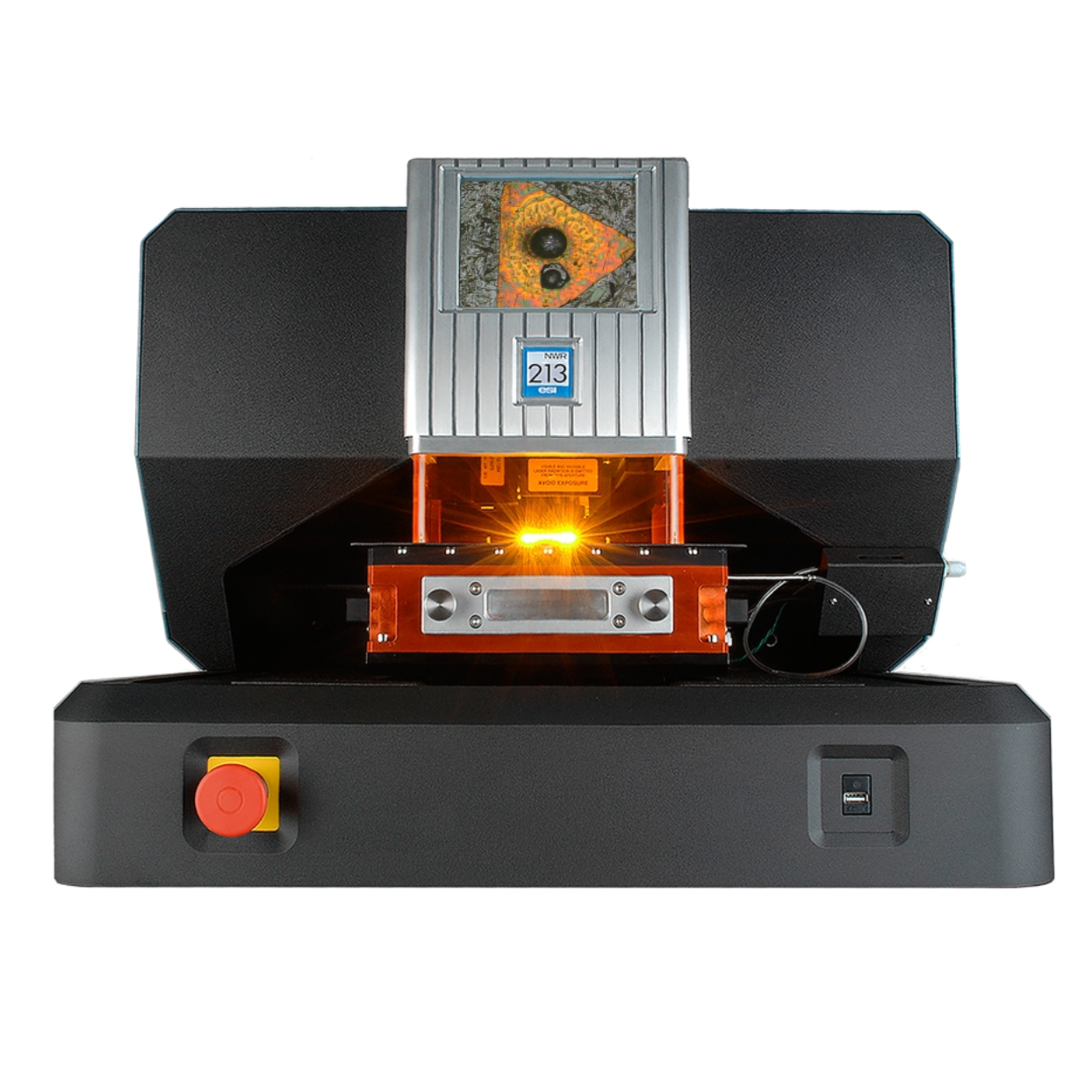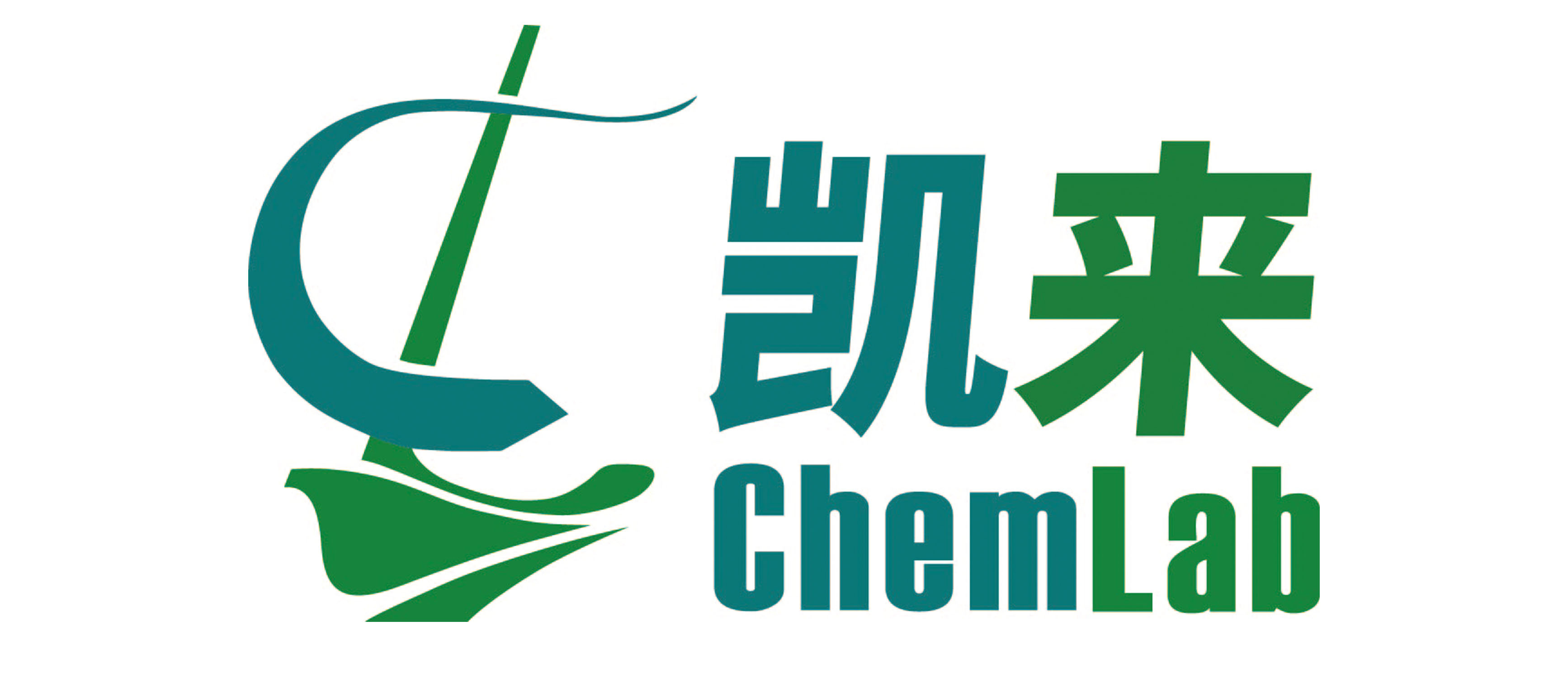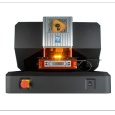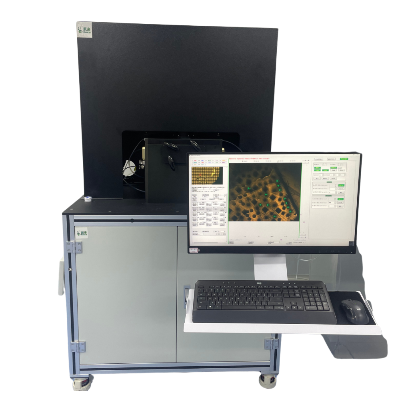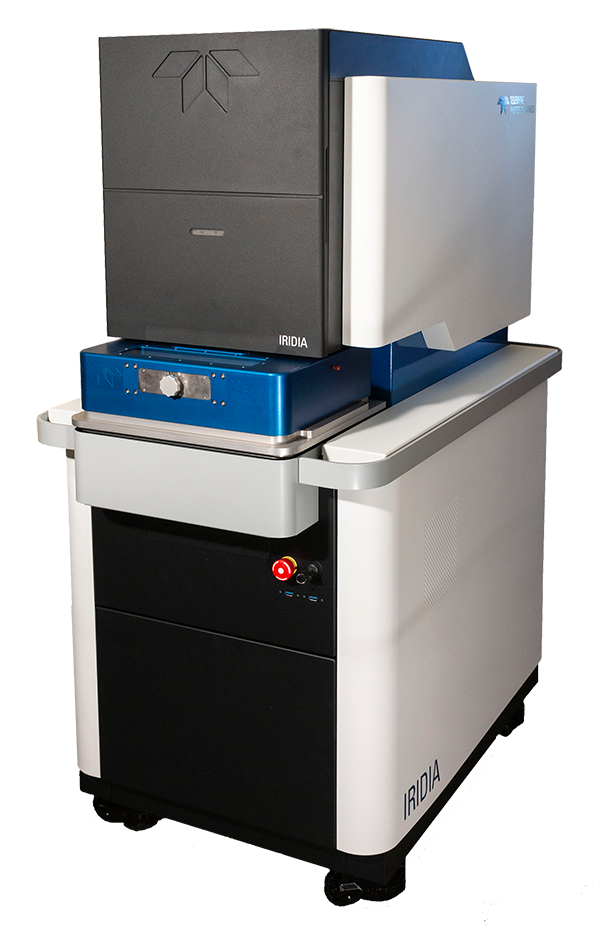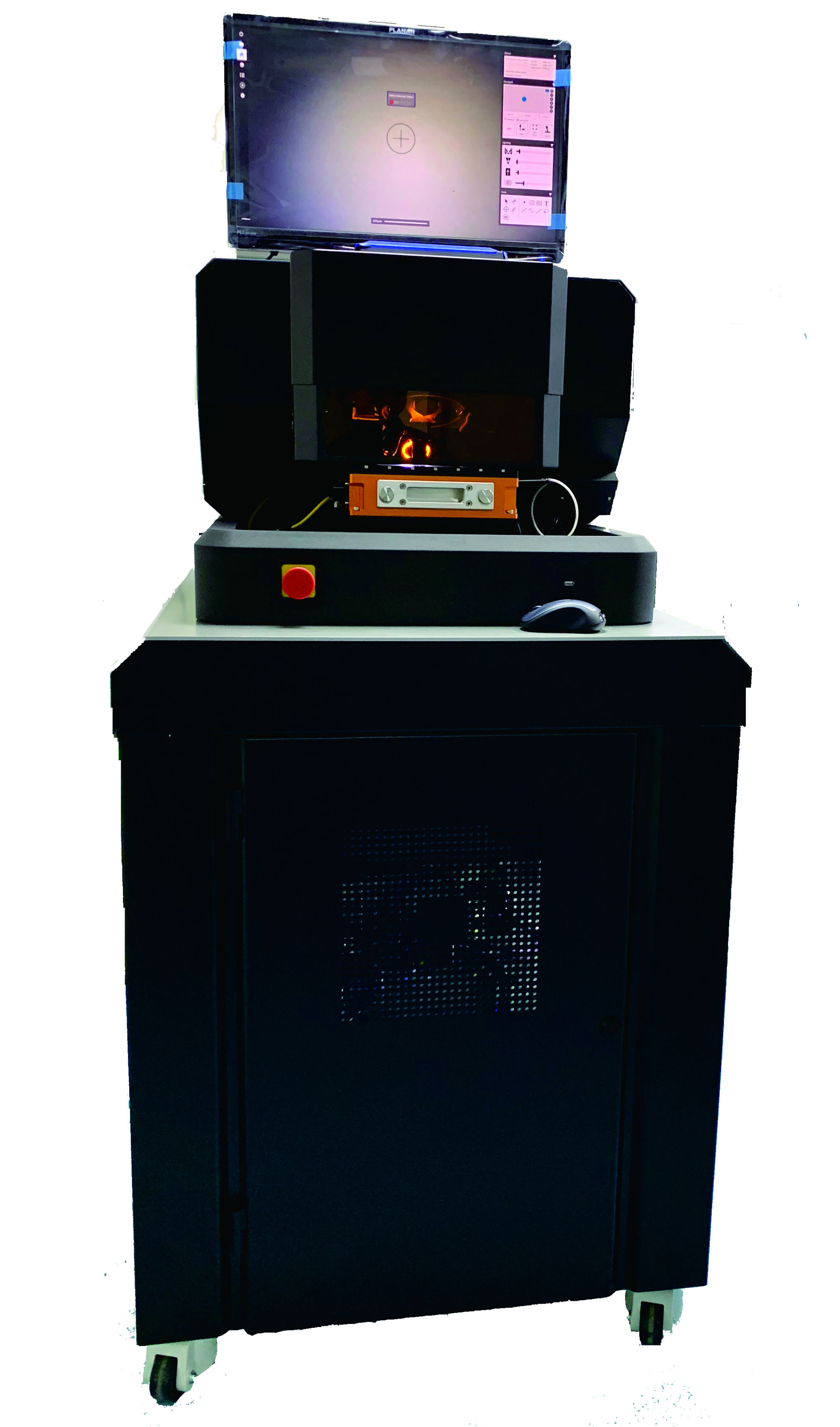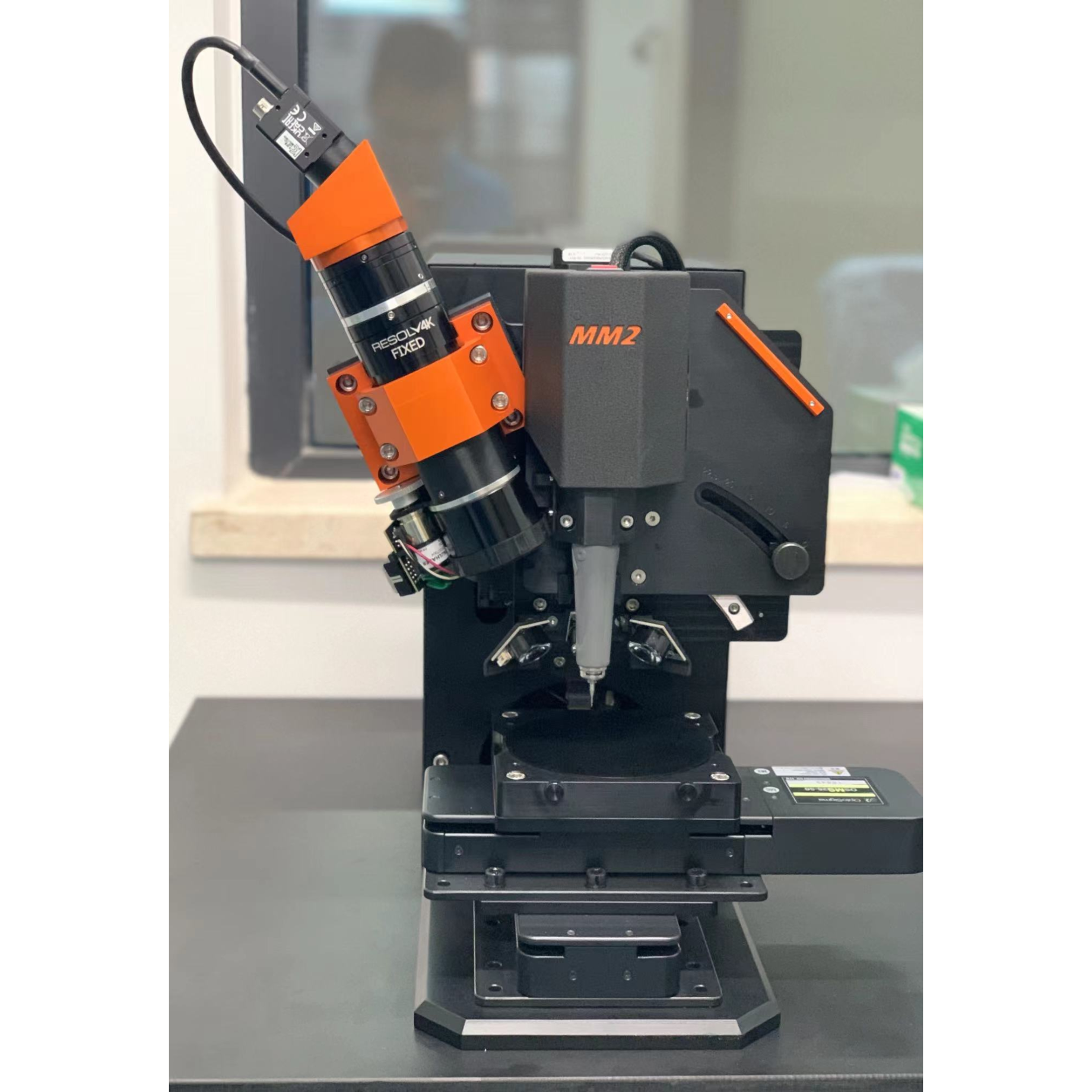方案详情
文
激光剥蚀固体采样时一种微损技术,可大大减少塑料样品制备时间,样品通量高。这里展示的数据介绍了一个独特的激光剥蚀固体采样方法,显示其作为可行技术能够*的进行多元素定量分析。
方案详情

NWR005 NWR005better performance. better yields.全国统统客服电话:400033 5217 Analysis of Plastics for Toxic Metals by LA-ICP-MS and a He Collision Cell Introduction Due to growing international concern governments around the world are setting in place regulatory guidelines torestrict the migration of certain toxic substances from manufactured materials into the environment. Elements ofparticular concern include: Cr, As, Cd, Hg & Pb. Acid digestion of polymeric materials for preparation of aqueous so-lutions is not trivial. Laser ablation solid sampling is a micro-destructive technique that reduces sample preparationtimes dramatically, enabling high sample throughput. The data presented here describes a unique, laser ablationsolid sampling method that displays real promise as a viable technique capable of accurate multi-elemental quantita-tive analysis. Eco-toxicological Concerns The European Union and the United States have defined regulations to protect theircitizens from pathways for migration of these elements into biological systems. Par-enteral nutrition products (IV bags, catheters, tubing and product containers) are indirect contact with the human blood stream. Consumer plastics (computer hardwareand peripherals, product packaging, etc.), incinerated or deposited into landfills, maytransfer trace elements into the local ecosystem-a major concern to health officials. Experimental An NWR213 laser ablation system was coupled to a quadrupole ICP-MS system equipped with a reaction/collisioncell (Perkin Elmer NexlON). The system was run in both normal mode (no collision cell gas) and kinetic energy dis-crimination, or KED mode (He collision cell gas) to compare and contrast the analytical capabilities of both modeswhen combined with laser ablation sample introduction. A large area scan was used to provide a bulk analysis. Themain operating parameters are listed in Table 1. below. Two poly-ethylene standards (IMEP-10 and BCR681) were used for calibration and bracketing standards, and three“unknown"poly-ethylene samples were analysed to assess performance and with a known composition at manufac-ture. These were: White-an“uncontaminated"sample; Yellow - high in Cr and Pb; Green-high in Br. Two fully auto-mated analytical runs were made, with each run consisting of 6 replicate analyses of each sample, so that both interand intra-experimental precision could be assessed. Table 1. Instrumental parameters of LA-ICP-MS Laser Ablation System NWR213 Sample Cell 100mm Two-Volume Cell Fluence 9 J/cm Spot Size 100 pm Scan Speed 200 um/s Scan Time 60 seconds He Sample Cell Gas Flow Rate 0.9 L/min Ar Mixing Gas Flow Rate 0.8 L/min ICP-MS RF Power 1350W He Collision Cell Gas Flow Rate (standard mode) 0 mL/min He Collision Cell Gas Flow Rate (KED mode) 5 mL/min Isotopes Monitored 13c,52cr,7As,79Br 111cd, 202Hg, 208pb Analysis of Plastics for Toxic Metals by LA-ICP MS and a He Collision Cell Results Full results are shown in Table 2 below. Precision and accuracy was improved, both in standard and KED mode,bynormalizing elemental signals to those of c(applied to all data). The most significant results were seen for Br, Crand Pb. In the case of Br, in standard mode a signal was detected in all three poly-ethylene samples despite the factthat none should have been present in either the white or yellow samples, and the two reported values for Br in thegreen samples were widely different. In KED mode Br was not detected in the white and yellow samples, while thegreen samples were determined to contain 435 and 443 ug/g Br, compared to a manufactured value of 450 ug/g.KED mode also provided the most accurate and precise determination for Cr in the yellow sample, and the most ac-curate result for Pb in the yellow sample. Table 2. Determined concentrations of toxic elements in poly-ethylene by LA-ICP-MS both with and without He collision mode (KED). White A White B Yellow A Yellow B Green A Green B Standard Mode%RSD ND ND - - ND ND ND ND - rs/g96 KED Mode%RSD ND ND - - ND ND - - ND ND - - us/g 96 Reference Value 0 0 0 p/g Br Standard Mode%RSD 1.31 7.23 8.46 8.91 94.3 406 g/g 96 88.0% 35.0% 65.5% 42.7% 7.88% 9.67% KED Mode%RSD ND ND- - ND ND - - 435 443 pg/g 96 2.95% 1.83% Reference Value 0 0 450 /g Cd Standard Mode%RSD ND ND - - ND ND - - ND ND - us/g 96 KED Mode%RSD ND ND - - ND ND - ND ND - - ug/g 96 Reference Value 0 0 0 g/g Cr Standard Mode %RSD ND ND - - 2542 2490 ND ND - ue/g 96 2.92% 7.31% KED Mode %RSD ND ND - - 2487 2487 ND ND - - ug/g 96 3.82% 1.86% Reference Value 0 2480 0 pe/g Hg Standard Mode %RSD ND ND - ND ND - ND ND - ug/g 96 KED Mode %RSD ND ND - - ND ND - - ND ND - - us/g 96 Reference Value 0 0 0 s/g Pb Standard Mode%RSD ND ND - - 7648 7459 ND ND - - us/g 96 4.40% 3.51% KED Mode %RSD ND ND - 8919 8935 ND ND - - pg/g 96 4.60% 6.78% Reference Value 0 8900 0 g/g Conclusions The use of He as a collision gas in the collision/reaction cell of a quadrupole ICP-MS has improved the analytical ca-pability of LA-ICP-MS for determination of toxic elements in poly-ethylene. This methodology can be widely appliedto the analysis of many different materials, and as KED mode is applied to all elements there is no additional timerequired for the analysis. 中国区合作伙伴——上海凯来实验设备有限公司
确定
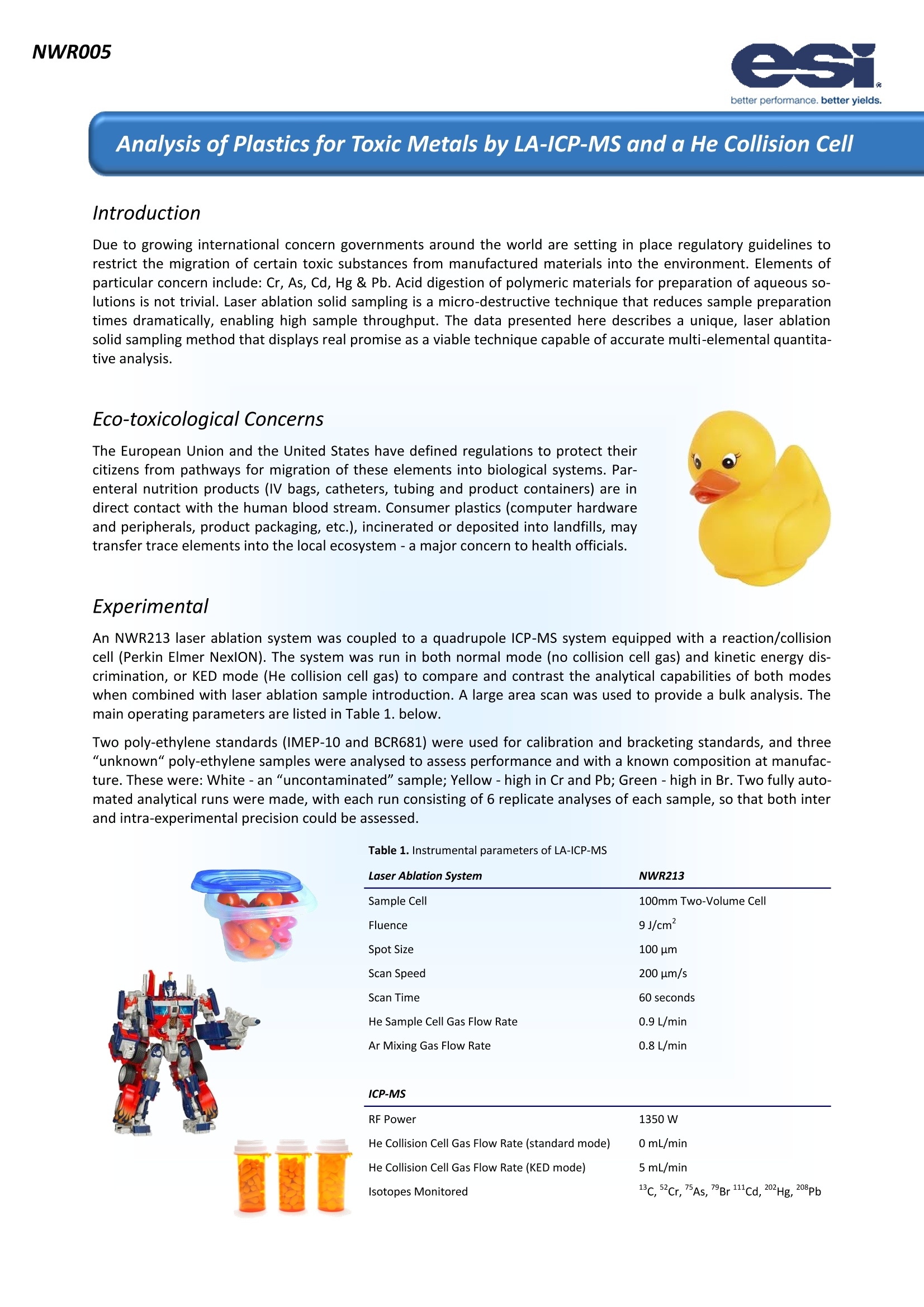
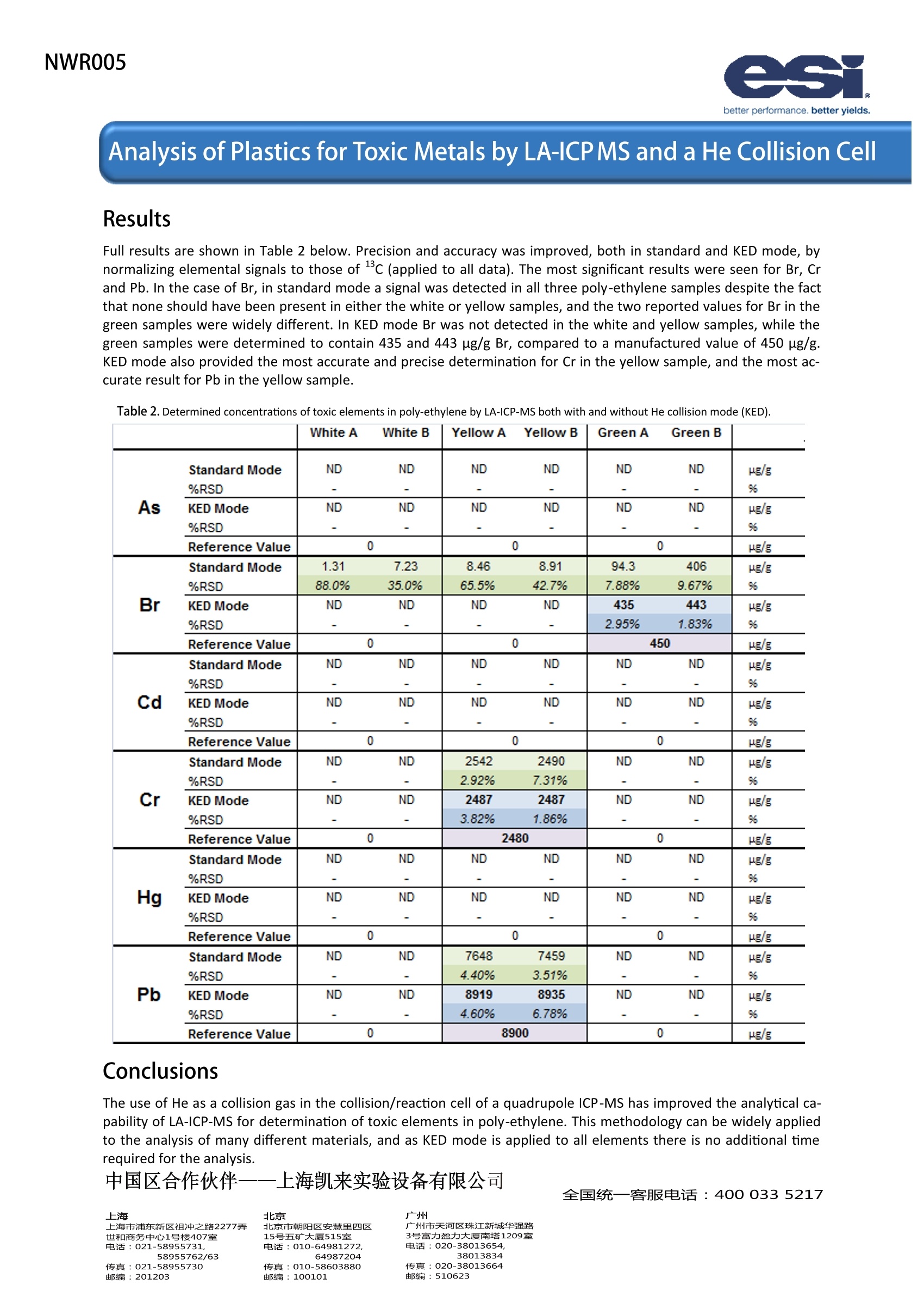
还剩1页未读,是否继续阅读?
上海凯来仪器有限公司为您提供《使用激光剥蚀LA-CP-MS和氦气碰撞池分析塑料中的有毒金属》,该方案主要用于其他中Cr, As, Cd, Hg , Pb和Br检测,参考标准--,《使用激光剥蚀LA-CP-MS和氦气碰撞池分析塑料中的有毒金属》用到的仪器有ESL213 灵活的激光剥蚀系统
推荐专场
相关方案
更多

